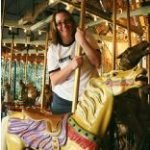
In the days leading up to the United States Barista Championship and the U.S. Brewer’s Cup, we at Barista Magazine are proud to share with you exclusive interviews with the six regional champions in each competition. We will feature the Southwestern Barista and Brewer’s Cup Champions; the Northwestern Barista and Brewers Cup Champions; the Southeast Barista and Brewers Cup Champions; the Northeastern Barista and Brewer’s Cup Champions; the South Central Barista and Brewers Cup Champions; and the North Central Regional Barista and Brewer’s Cup Champions on Tuesday. And stay tuned right here on Barista Magazine’s blog all next week for more of our preview coverage of all the exciting events and parties happening in Seattle in conjunction with the SCAA, and reports and photos of all the action every day through the end of this epic week in coffee.
Todd Carmichael
Co-founder
La Colombe
Philadelphia, Pennsylvania
When did you first get into coffee?
I first began in coffee the fall of 1982, Seattle. The place was the big green mermaid on the University Ave. There were four cafés back then.

What was your first amazing experience with coffee?
It must have been 1978, and I had my first espresso. It must have been awful, I’m certain of that, but I loved it. It was strong and naughty and foreign. There was only the one espresso machine in town (Spokane) then and it all seemed so exotic and strange and other worldly. It captivated me, and I was drawn in. I knew that a whole world, and a whole life somehow resided in that machine, and in that cup.

Barista competition history?
This year was my first official competition.

Tell me about how the coffee scene and community compare between Pittsburg and New York?
Both cities expect different things from their cafés, while both demand one thing in common ”flavor and authenticity.

How did you train for the regional, and how are you preparing for the U.S. Brewers Cup?
I’m a bit of a compulsive brewer ”those around me and those that know me know that I brew for therapy. It can be maddening. Neighbors drop by from all [over] the neighborhood to have a cup. I find forming the best roasting profile on the lab roasters, then forming the perfect brewing profile on top of that, is both challenging and calming ”like meditating or perhaps like the crossword puzzles for some. I trained by simply doing that every day, like I typically do, but upping my game where possible, obsessing through the night, pushing my thoughts as far as I could down the coffee rabbit hole, and maybe doing it all a bit more than normal.

Can you tell us about the coffee you used in the regional?
It’s the winning Geisha (Gesha) lot in the 2013 Best Of Panama competition, called œIronman from a farm named Auromar Estates. Besides being a BOP winner, there [are] a number of things that interested me about this coffee. It’s authentically sun-dried, no mechanical driers; the plants are still very young and pushing nutrients to the fruit and less the main stalk; the use of shade is much heavier than others in that region (1 “4), offering a very nice swing from day [heat] to night chill; and finally, it is a microlot separated at the mill, and not through growing area isolation. I know this flies in the face of convention, but it is testimony to what hard work and insanely detailed separation at the mill can do.

Why do you feel competing in barista comps and brewers cup type things are important educational experiences for baristas?
I was not prepared for the powerful learning opportunity competition has proven to be. It is a beautiful and profoundly obsessive experience that changes you for the better and soundly buffs out all levels of brewing skills. It has been the highlight of my year and hugely beneficial to me as a brewer and as a member of the community. Nothing compares.

What do you do when you’re not doing coffee?
Running a roasting company of 150+ employees means doing lots of things that are not always directly coffee, and that accounts for a part of my time. I also shoot a TV series, run the La Colombe Charities and Coffee Academy in Haiti but most of all I’m a dad (to four) and husband (to one). Outside of that, I have no life.


